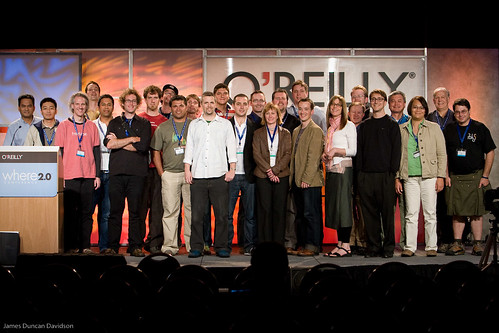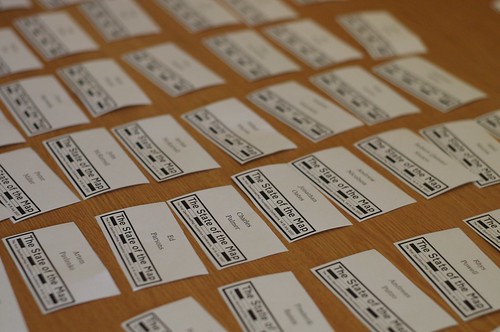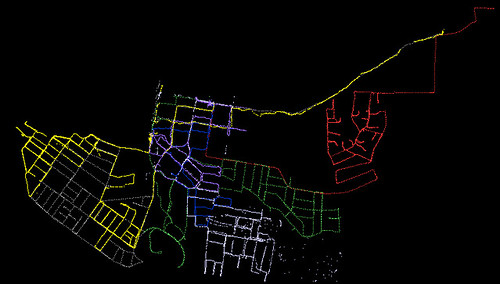What are the burning OpenStreetMap issues that you want to talk about? Have you been working on the next killer OpenStreetMap application? Have you been promoting mapping and opengeodata, holding mapping parties and tirelessly mapping in the sun, rain, wind and snow?
The call for papers for the third international StateoftheMap conference is now open. The OpenStreetMap Foundation invite contributions from mappers, geo-hackers and open geodata supporters around the world. If you are involved in OpenStreetMap mapping, coding or community organization – or if you want the chance to present your ideas or opinions to the OpenStreetMap community, you should submit a paper to the StateoftheMap 2009.
Themes for 2009 are:
OSM 2010 – Taking OSM from 100,000 to 1,000,000 contributors
OpenStreetMap has come a long way in a very short space of time. With 100,000 contributors all around the world, OpenStreetMap has its future ahead. But there are also some big challenges ahead. How can OpenStreetMap continue to support new mappers around the world? How can the successes of mappers from well mapped countries be repeated in the unmapped world? What will a community of 1,000,000 mappers look like and what technical infrastructure needs to be put in place to support OSM’s growth? What are the new challenges that the OSM community must rise to in order to attract more mappers from diverse cultural backgrounds? What lessons can be learned from other open-source and open content communities who have made the transition from bedroom projects to world renowned successes?
New Mapping Frontiers – Expanding OSM into new communities, new regions and mapping new features with OSM
OSM started with some roads and footpaths in central London and now includes 1000s of different types of geodata around the world. As OSM continues its goal to provide a free map of the world, where will the line be drawn between “mappable” and “unmappable”. The third and fourth dimensions, indoor mapping and historic mapping are all there for the taking. What about aerial imagery? Will UAVs and community contributed aerial data provide detailed, open datasets? Is there really such a thing as “ground-truth”, or is all mapping subject to interpretation? What about subjective data: where do reviews, ratings and personal opinions fit in the OSM database? As OSM is taken up by new communities, what are the cultural barriers that need to be broken to make sure that new mapping frontiers are crossed?
OSM Application Development – Building applications that use the OSM APIs
OSM’s APIs provide a great base for all kinds of application development. What are the killer apps of 2009? Will this be the year of the OSM Mobile Editor? How can OSM’s trailblazing cartography continue to break new ground? What are the “enterprise” tools and services that are bring OSM maps to new users around the world?
Tools Tips and Techniques – Practical workshops that take a deep dive into a specific area of OSM
Are you power user of an OSM tool? If you’d like to share your expertise with OSM editors, cartography tools or OSM APIs, you can propose a session to host. Maybe you want to learn more about a particular area of OSM – if so you can also request a session to be given.
Session Formats
- Talk – present your paper in either a 15 or 30 minute slot with time for questions afterwards
- Discussion Sessions – Groups of 5 – 15 people hold an informal group discussion of a special interest topic
- Lightening Talks – 5 minutes to say your piece. Sign up on the day
- Workshops – 2 hour sessions that give OSMers the chance to take part in an in depth tutorial
The call for papers closes on the 3rd May 2009, so you have just over 6 weeks to get your abstracts in. A provisional program will be published in mid May 2009.
To submit your paper, follow this link. If you need any more information about submitting a session, contact Nick.
To register for the StateoftheMap 2009, click here.



